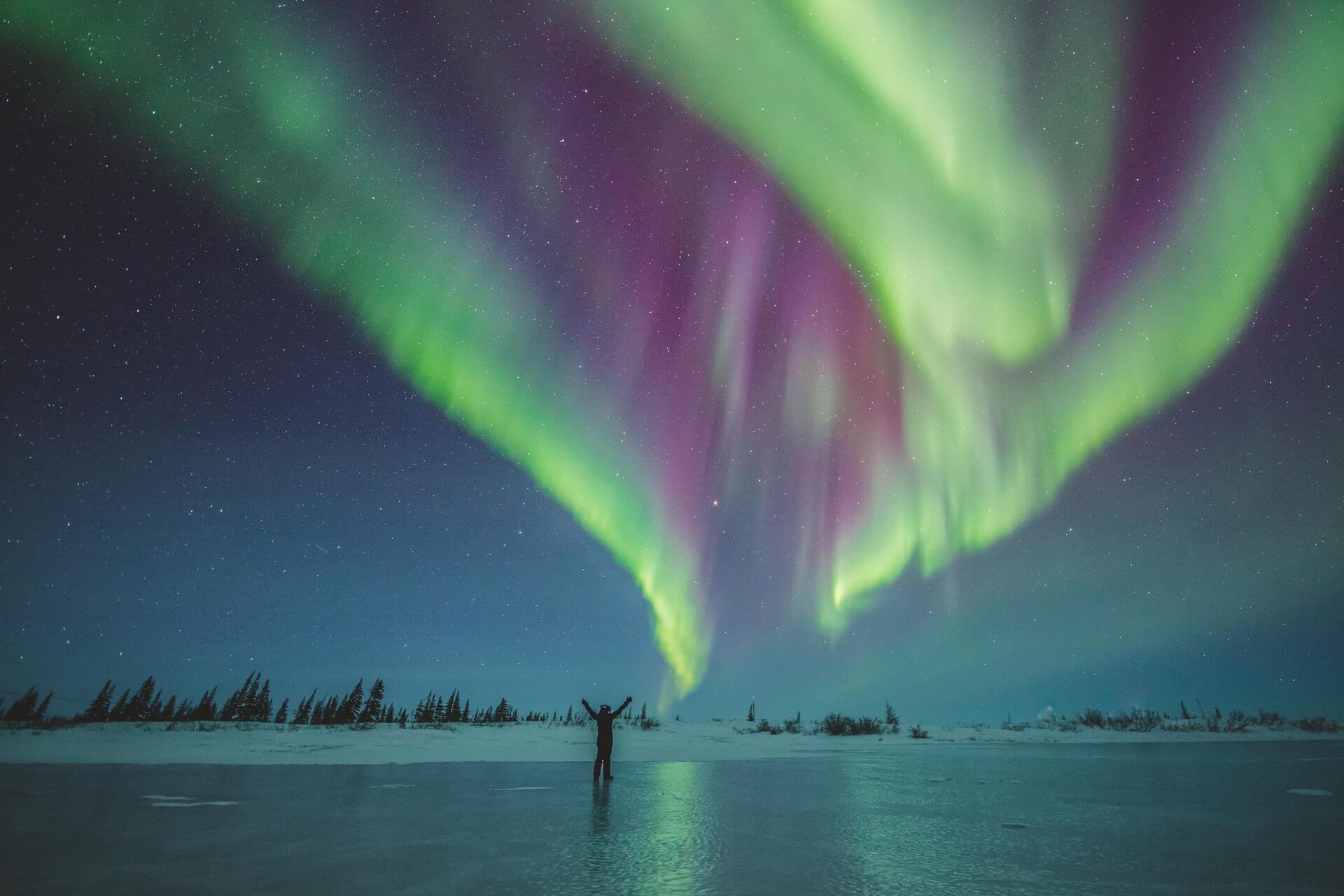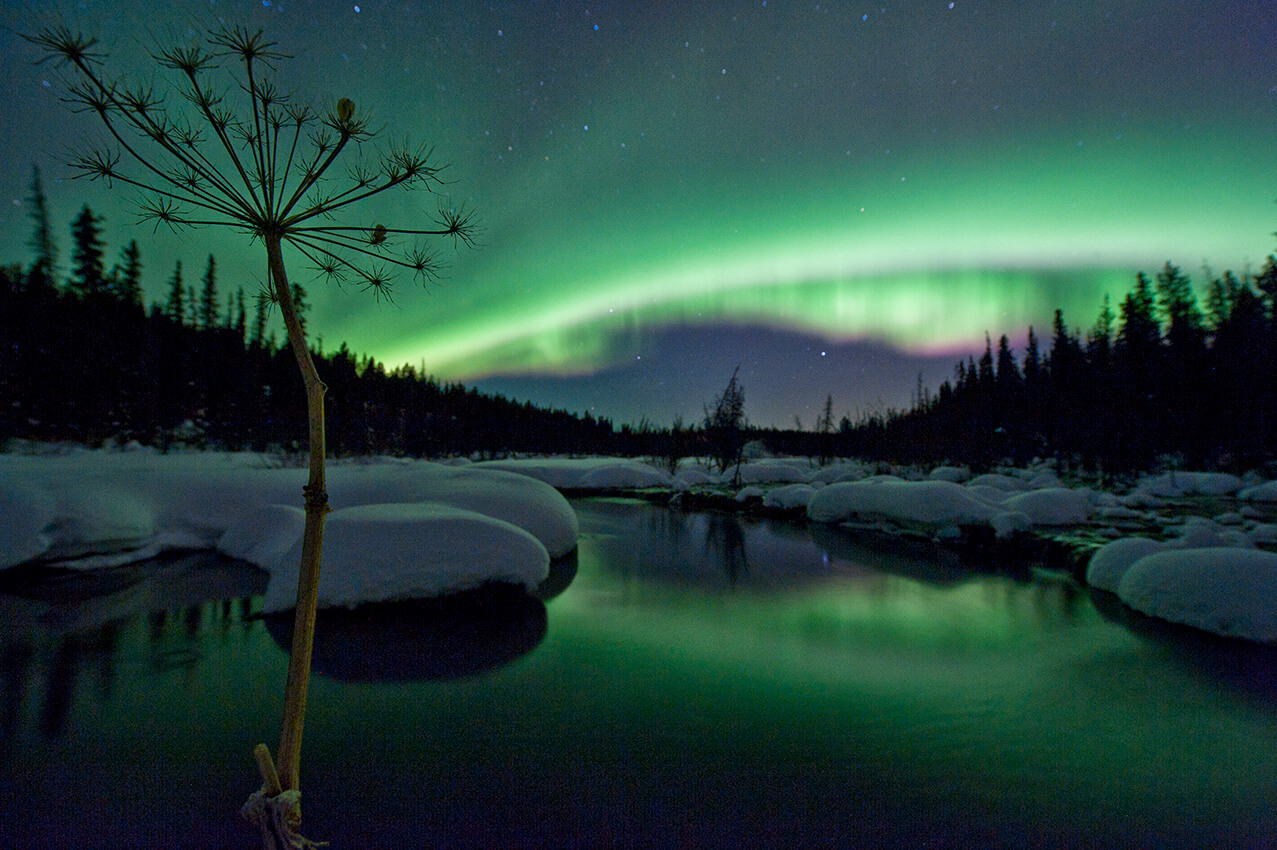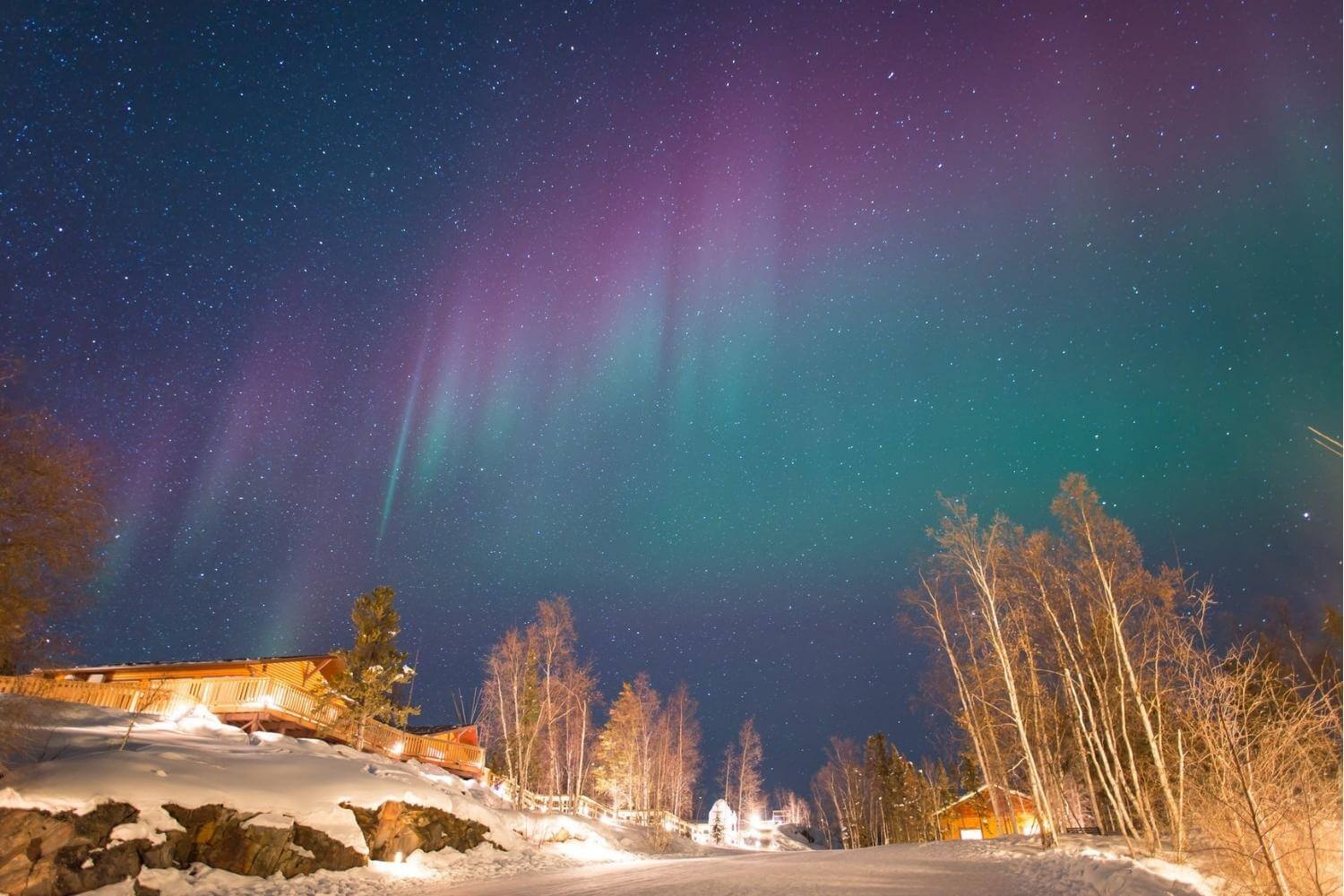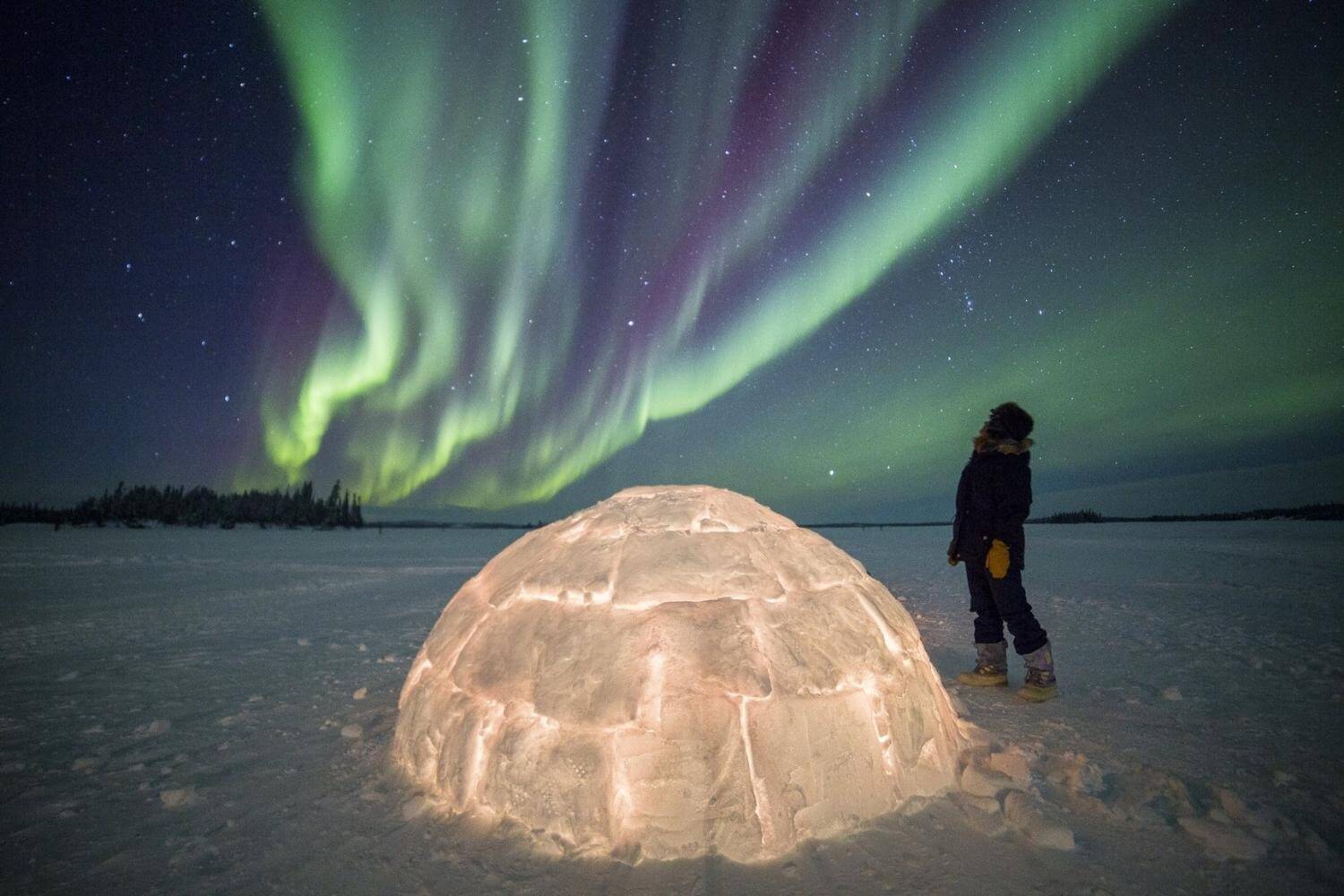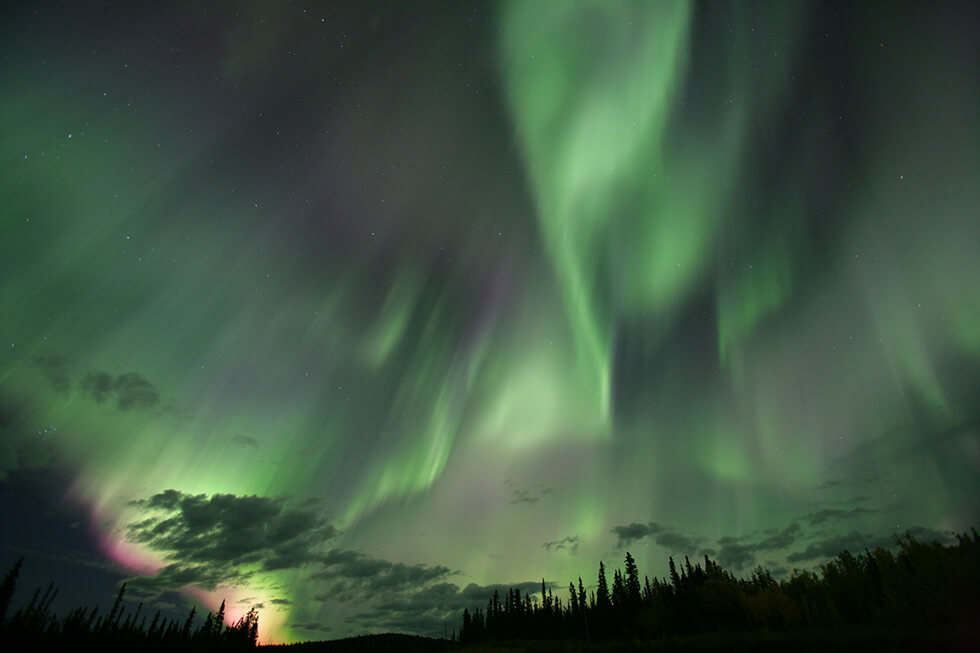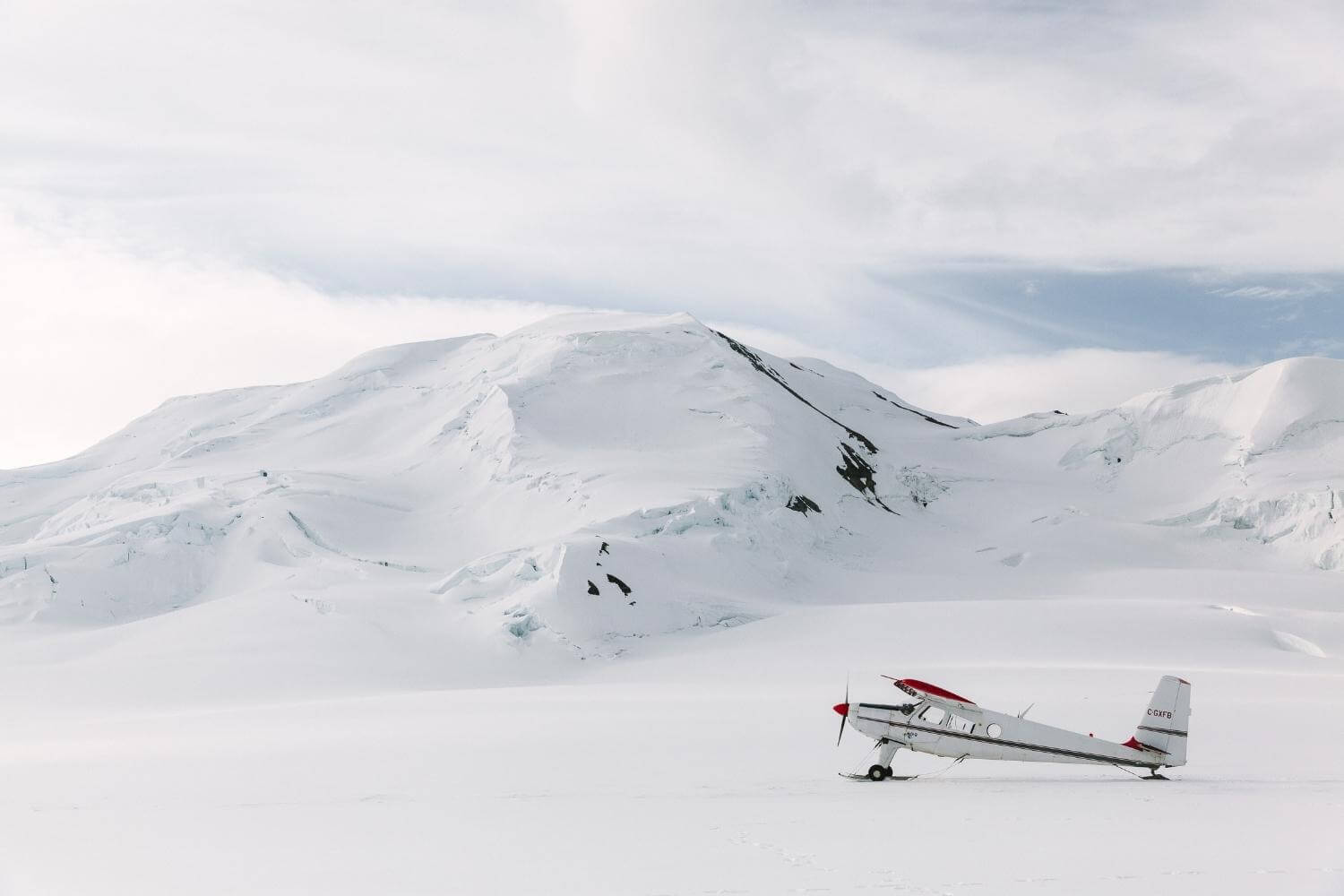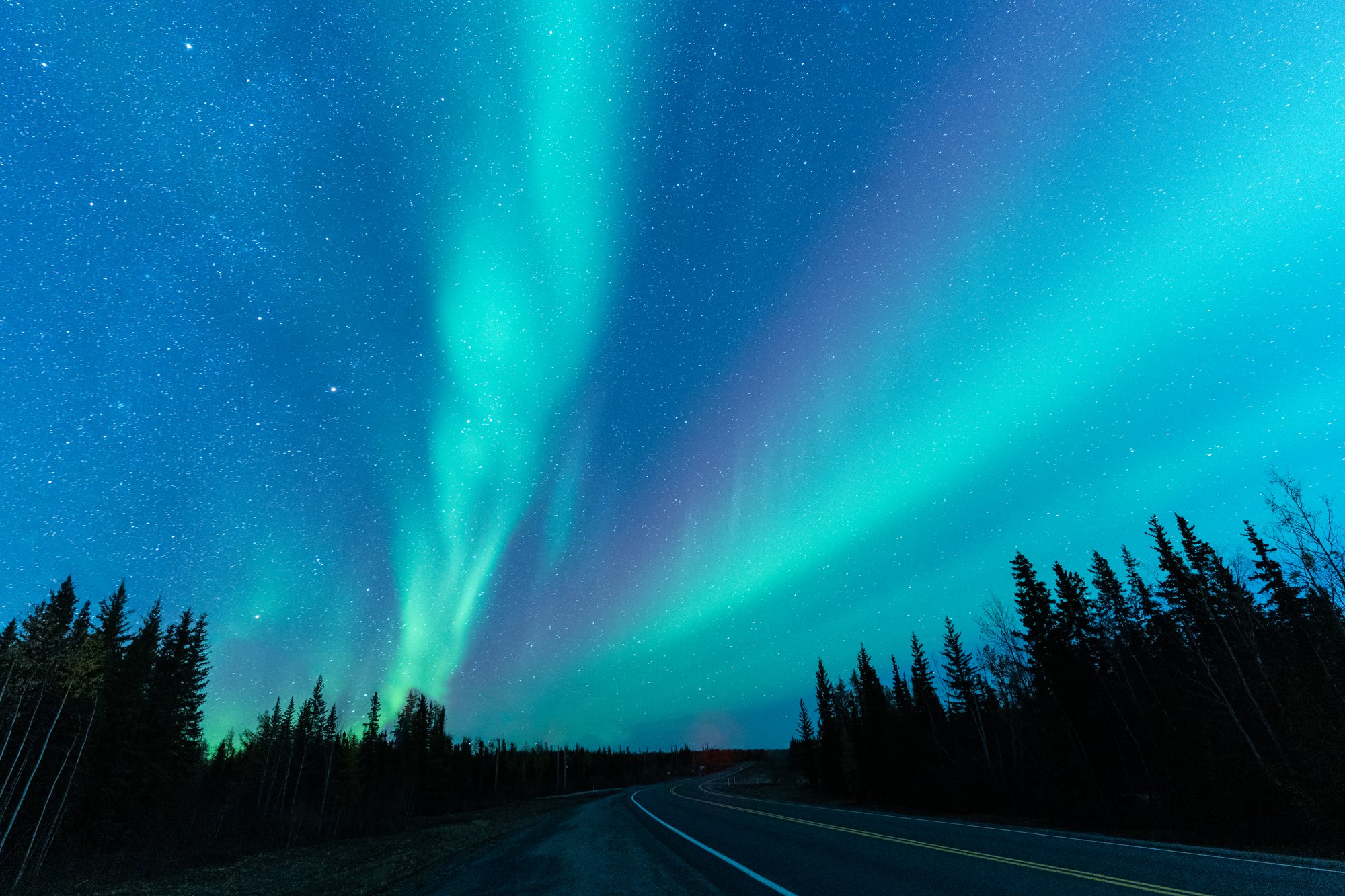Everything You Need To Know About Aurora Viewing In Canada
If ever there was a travel experience worthy of the bucket list, seeing the Aurora Borealis is it. Luckily for us Canadians, Canada is one of the top destinations in the world to see the Northern Lights.
But knowing where and when to go to have the best chance of seeing the natural phenomenon is a bit tricky. We created this guide to help you understand the different options when looking for your ultimate Aurora Borealis holiday.
Read on for the answer to all your frequently asked questions about Aurora viewing in Canada and be sure to check out our Northern Lights page for all of our Aurora experiences.
What are the Northern Lights?
Let’s start with the basics. The Aurora Borealis — or the Northern Lights as they are commonly called — are caused by solar flares. Charged particles come from the sun and interact with the Earth’s magnetic field creating a beautiful light show in the sky.
Auroras happen around the Earth’s magnetic poles. Those that occur around the north pole are called Aurora Borealis or Northern Lights and those that occur around the south pole are called Aurora Australis or Southern Lights. Mostly commonly Auroras are green or greenish-yellow but can occasionally be red, blue or purple. The colour of the Aurora depends on which gasses the charged particles collide with in the Earth’s atmosphere.
It takes time for the flares that come off the sun to travel to Earth, so scientists are able to predict with some certainty the likelihood of a strong Aurora a few days before it happens. You can monitor this space weather here.
Where can I see the Northern Lights in Canada?
Since the Aurora is an interaction of the sun’s released particles with the Earth’s magnetic field, the best places to see the Northern Lights is under the Auroral Oval, a 2,500 km radius that extends from the magnetic pole. Much of Canada sits under this Auroral Oval, which means the Aurora is clearly visible from the northern parts of nearly all of our provinces and in all three territories.
While you can catch a glimpse of the Aurora when visiting many spots in Canada, we focus our Aurora Borealis packages and experiences in three regions of Canada where the Northern Lights are most likely to be visible due to good weather conditions, the darkness of the skies, low to zero light pollution and the availability of local experts who know where and when to head out for Aurora viewing.
The three regions that we currently recommend are the Yukon, the Northwest Territories and Churchill in northern Manitoba. These regions are situated directly under the Auroral Oval and when the Lights come, they are directly overhead. As you get further south from the Auroral Oval, the Aurora will appear more on the northern horizon rather than overhead. If you travel further north, the Lights can appear on the southern horizon.
When is the best month to see the Aurora Borealis in Canada?
To see the Northern Lights at their best you need dark and clear skies. For this reason, summer is not a good time to see the Aurora since many of our northern areas experience nearly 24 hours of daylight and while the Aurora may actually be out, it is not visible.
Typically Aurora viewing is good from mid-August when the skies start getting dark enough to see the Lights until mid-April but this can vary based on location. Which month is best for you to visit will depend on what else you’d like to do on your holiday.
The Yukon’s Aurora season runs from late August until mid-April but you’ll get a different experience based on when you visit. September in the Yukon, for example, offers an explosion of red and golds on the tundra. February brings beautiful cold weather with enough daylight hours for daytime winter activities (as opposed to December when the days are much shorter).
In the Northwest Territories, there are basically two Aurora seasons — you can visit in the warmer weather from mid August until the end of September or in the colder weather from mid-November to early April. October through to mid-November is not a good time to go as the area tends to get a lot of precipitation during those weeks and the cloud cover makes Aurora viewing difficult.
In Churchill, the best times for Aurora viewing are during the clear and dark skies of February and March but that’s not to say you can’t see beautiful Aurora at other times. In fact, if you are lucky, you could combine an Aurora viewing trip with the area’s beluga whale migration season in August or polar bear viewing season in October and November.
Don’t be afraid to visit these amazing northern places in the winter — yes it does get cold but we have winter clothing rentals that will keep you toasty warm while out both during daytime activities and for your Aurora nighttime adventures.
What can I expect on my Aurora viewing holiday?
Being a natural phenomenon, the Aurora Borealis does not show up on demand or at any specific time. But it is obviously best viewed when the sky is at its darkest and this means that it is often the middle of the night when you have the best chances of seeing the Lights. If fact, the best time for seeing the Aurora is between 11 pm – 3 am.
There are basically three different types of Aurora viewing holidays that you can book: a village experience, a hunting experience and a lodge experience. We will break down the pros and cons of each type of trip below.
The village:
Aurora villages are dedicated spaces set up outside of city centres where there is no light pollution. They are designed to face the correct way in order to best see the Aurora and they often consist of warm huts, tipis, tents or cabins where you can relax while waiting for the Northern Lights to appear. There is likely an outdoor viewing platform and outdoor firepits for staying warm. On these types of holidays, you will stay in a hotel in the city (such as Yellowknife or Whitehorse) and your local guide will pick you up around 10-10:30 pm, take you to the dedicated village area and then return you a few hours later (hopefully having seen some amazing Northern Lights).
The pros of this type of trip are three-fold:
- These villages are usually well-equipped and comfortable. They offer warm beverages and sometime snacks to keep you going through the cold nights. When the Aurora does show up, there is plenty of space to go out and enjoy the show.
- Village experiences tend to be less expensive because they are shared with other guests.
- You get the benefit of staying in a hotel in the city centre (close to dining, shopping and attractions) while still being transported to a dedicated space for optimum Aurora viewing.
The downside to this type of trip is that you are on a group timeline, which means that your pick up and drop off times are set and even if there is no Aurora that night, you still stay in the village for the allotted time. This can be difficult for families as young kids would have a hard time staying up for so many hours in an isolated location.
The hunting:
Aurora hunting experiences are unique in that they are not stationary. Much like in the village experience, you typically stay in a hotel in the city and are picked up by a local guide in the late evening. The difference is that rather than heading to a dedicated location for viewing, Aurora hunters are experts in knowing where to go for the best vantage points to not only see the Aurora but to see it against varied backgrounds. Aurora hunting means you drive around with the guide in a comfortable van and get out at various stops to look at the Aurora.
The pros of this type of trip:
- You get to see the Aurora from different vantage points and against a variety of backgrounds, which is great for picture taking.
- If one area isn’t great for seeing the Lights, your knowledgeable guide can drive to a different location for more optimal viewing.
- The guides we work with are great storytellers and create a wonderful experience on the road.
The downside of this type of trip comes for those that may not like being in cars. There isn’t one central place to relax and sit while waiting for the Northern Lights so you have to be ok with being on the move.
The lodge:

The pros of staying in a lodge:
- Aurora viewing happens right from the property so you don’t have to travel anywhere at night. You can simply step out of your room and see the Aurora in the sky.
- Lodges offer a wake up service, which means you can stay cozy in your bed and someone will knock on your door when the Aurora makes an appearance.
- You have access to your own private room at all times so you get to decide how long your Aurora viewing experience will be — stay out all night and enjoy the view or hop into bed after an hour. This is a great option for families as kids can go to bed anytime.
The downside of this type of trip is that you are often far from the city centre, away from popular attractions and shopping. These type of trips also tend to be more expensive than the other two options.
Am I guaranteed to see the Aurora on my trip?
The short answer is no. As with anything that happens in nature, the Aurora is not predictable and can never be guaranteed. However, we work with experts on the ground in various destinations who know when and where we have the best chances of seeing the Aurora.
We know that strong and beautiful Auroras occur more often during times of Solar Maximum and less often during times of a Solar Minimum. The more active the sun is, the more likely and vivid the Auroras are on Earth and after charting the sun’s activities for hundreds of years, we know that solar activity tends to go in 11-year cycles.
We are just entering the lead up to a Solar Maximum (a period of time where the sun is more active) so Aurora viewing will optimal from 2023 through to 2026.
Read more about the Solar Maximum and what it means for Aurora viewing in Canada.
What if I don’t see the Northern Lights on my trip?
It can and does happen that an Aurora viewing holiday has no Aurora. Much like wildlife viewing, the Aurora cannot be guaranteed. What we like to tell our clients is to plan a robust holiday full of amazing experiences so that even if the Aurora Borealis doesn’t show up — or the weather conditions are such that the Aurora isn’t visible — you still leave with incredible memories and experiences on your northern getaway.
Depending on the time of year and the location you choose for your Aurora viewing vacation, you can add in a ton of amazing activities and experiences. Try dog sledding, soaking in hot springs, snowmobiling in the mountains, ice fishing, cross-country skiing, hiking or wildlife viewing. There are many really cool and unforgettable things to do — such as glass blowing, visiting Indigenous cultural centres, flight seeing in a Cessna or participating in a husky stampede (picture yourself surrounded by retired sled dogs) — that will add so much to your trip.
With so many great experiences to be had in the Yukon, the Northwest Territories and Churchill, seeing the Aurora is just the icing on the cake. As we mentioned above, however, with the Solar Maximum gearing up again, your chances of seeing the Northern Lights will be quite high for the next few years.
Reach out to us if you have any further questions or if you’d like to start discussing your dream Aurora getaway.

